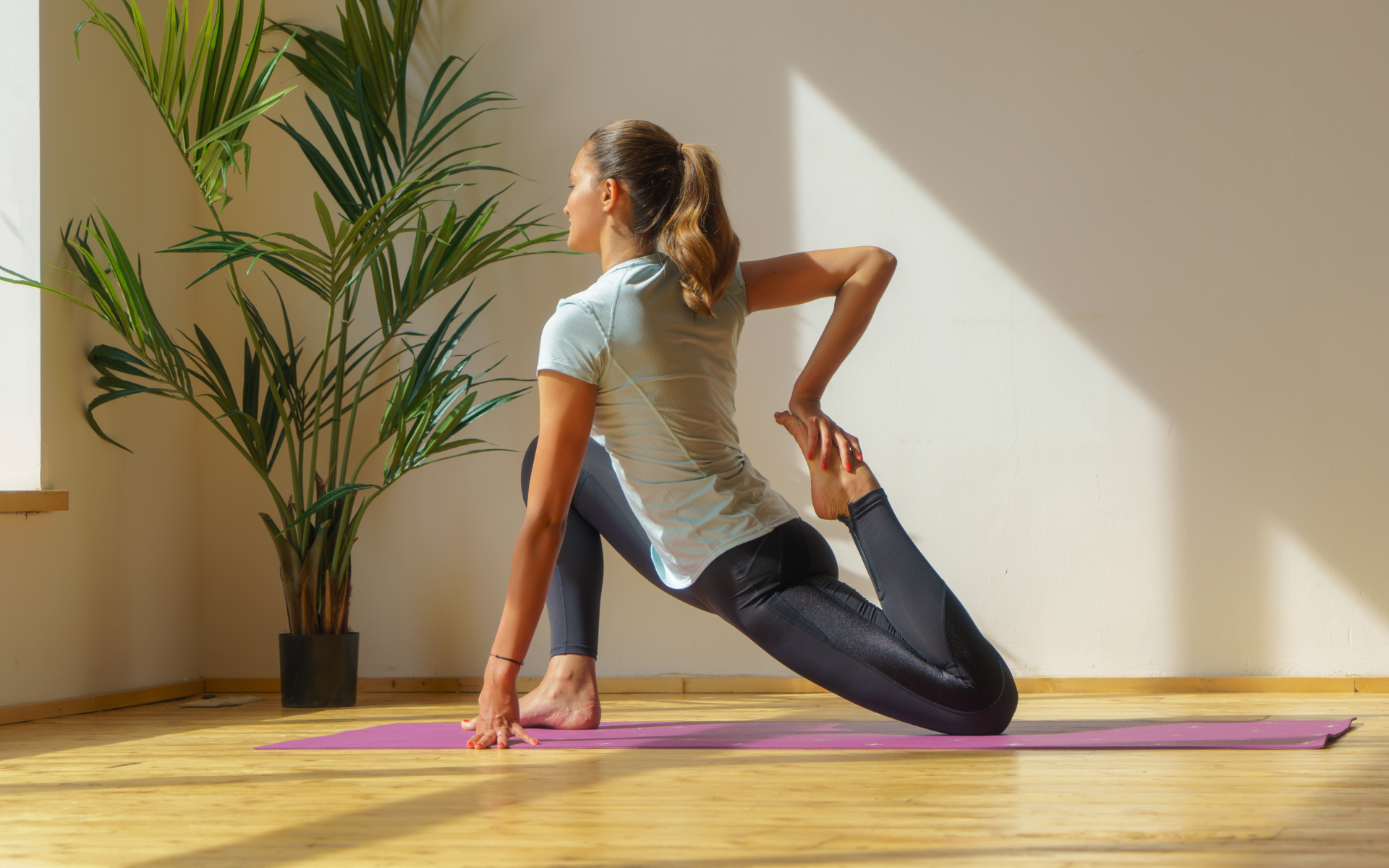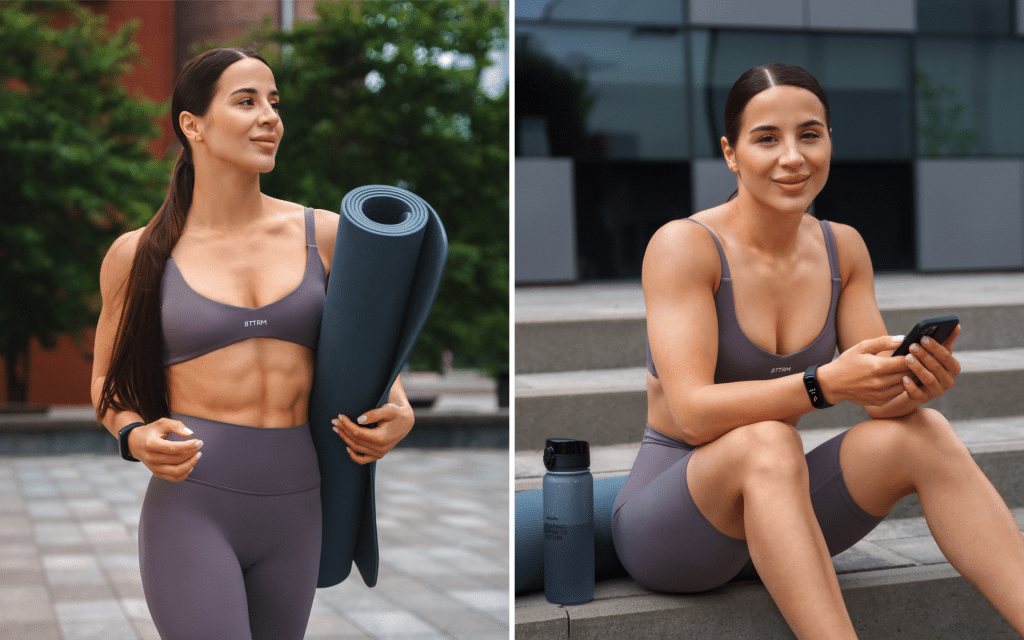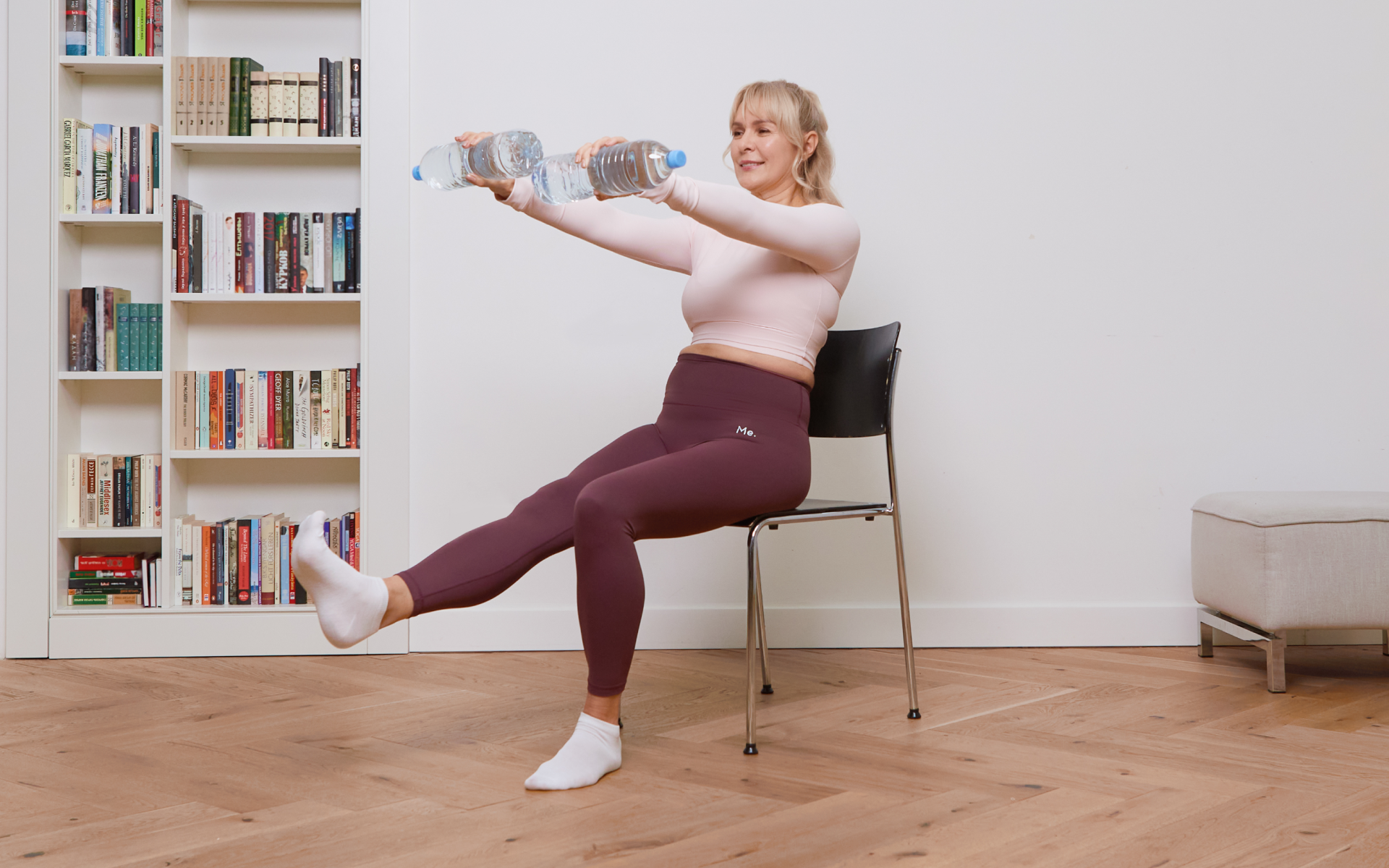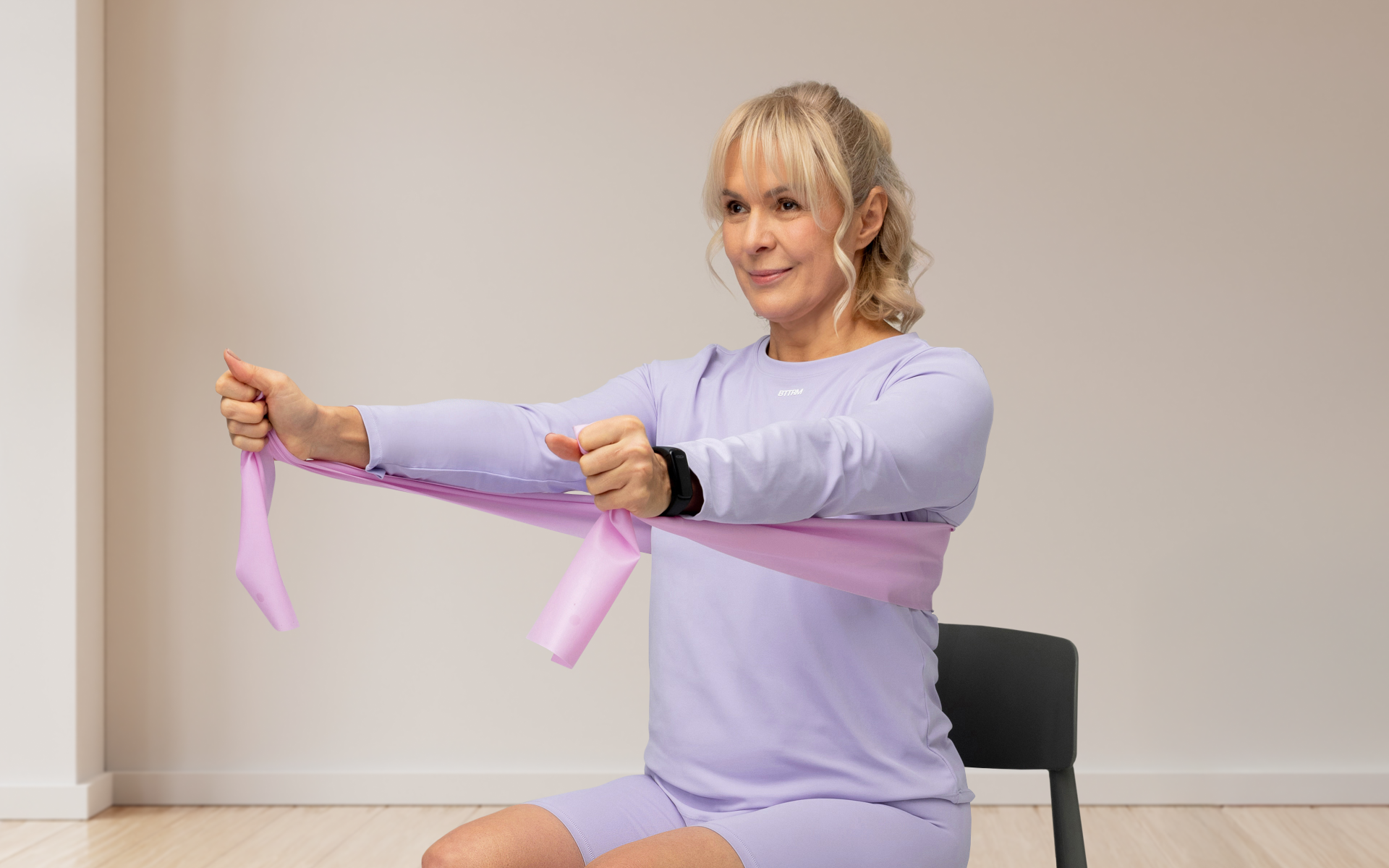Knee recovery is the process of recovering and restoring function to the knee joint after an injury, surgery, or condition that has caused damage or impaired its movement. The goal is to regain strength, mobility, and stability while minimizing pain and preventing additional harm.
Due to the critical role the knee plays in bearing weight and enabling movement (1), its recovery is fundamental to maintaining an active and healthy life.
However, you shouldn’t start any knee recovery workouts without first consulting your healthcare provider. They can assess your specific condition and help you determine the best exercises for your needs.
With your doctor’s approval, you can use this guide to gentle knee recovery workouts to try at home. Remember to proceed cautiously and listen to your body’s signals, only doing what feels comfortable and within your capabilities.
What Are Some Safe Knee Recovery Workouts to Do at Home?
Always consult your healthcare provider before you start any workout program, particularly if you’re recovering from a knee injury. Your provider can recommend exercises that are tailored to your unique needs and ensure your safety during recovery.
People with significant or chronic knee injuries or pain or those who require knee surgery will often be referred to a physical therapist. This guide isn’t meant to be a “one size fits all” program for anyone with knee pain. Your doctor or physical therapist will provide an individualized program that’s based on your specific condition. This guide will present common exercises that may be prescribed by your doctor or physical therapist as you go through your knee rehabilitation process. If approved by your doctor, they can also be used for people with minor knee injuries that don’t require physical therapy and can be managed on your own.
Some common early-stage knee exercises include::
1. Range-of-Motion (ROM) Exercises
These exercises promote flexibility, improve joint movement, and help prevent stiffness (2).
Heel Slides
- Lie flat on your back with both legs extended.
- Slowly slide the heel of your injured leg toward your glutes while keeping your foot on the floor or bed.
- Once you feel a gentle stretch, pause for a moment and hold the position.
- Slide your heel back to the starting position.
- Repeat 10-15 times, gradually increasing as your range of motion improves.
Seated Hamstring Stretch
- Sit on the edge of a chair with one foot on the ground and the other extended out in front of you with your heel on the ground.
- Lean forward slightly from the hips without rounding your spine.
- Hold the stretch for 30 seconds, feeling a gentle stretch in the back of your thigh.
- Switch sides and repeat if desired.
Seated Knee Flexion Stretch
- Sit as far back as you can on a sturdy chair with your back straight and your feet flat on the floor.
- Plant the toes of the knee you want to stretch into the ground with your knee bent as much as you can from your starting position.
- Keeping your toe planted, slide yourself forward toward the edge of the chair, allowing your knee to bend further as you do so.
- Hold the stretch for 15-30 seconds, breathing deeply and keeping your back straight.
- Slowly release the tension and slide yourself back to the starting position.
- Perform the stretch 2-3 times.
Standing Calf Stretch
- Stand facing a wall with your feet hip-width apart.
- Place your hands on the wall at shoulder height for support.
- Step one foot back, keeping it straight with the heel flat on the ground. The other foot should be closer to the wall with a slight bend in the knee.
- Gently lean forward toward the wall, keeping your back leg straight and heel on the ground. You should feel a stretch in the calf of your back leg.
- Hold the stretch for 15-30 seconds, breathing deeply and keeping your back straight.
- Slowly return to the starting position and switch legs to repeat the stretch on the other side.
- Perform the stretch 2-3 times on each leg.
The BetterMe: Health Coaching app will provide you with a host of fat-frying fitness routines that’ll scare the extra pounds away and turn your body into a masterpiece! Get your life moving in the right direction with BetterMe!
2. Strengthening Exercises
Building the muscles around your knee helps stabilize the joint and reduces stress on the knee (2).
Leg Lifts
- Lie on your back with one leg bent and the other leg straight.
- Tighten your thigh muscle (quadriceps) of the straight leg.
- Slowly lift the leg to about six inches off the ground.
- Hold the lift for 3-5 seconds, then slowly lower the leg back down.
- Perform 8-12 repetitions for 1-2 sets.
Mini Squats
- Stand with your feet shoulder-width apart and your hands resting on a chair or wall for support.
- Slowly lower your body by bending your knees slightly – no more than 45 degrees.
- Keep your knees behind your toes and your back straight throughout the movement.
- Slowly return to a standing position.
- Perform 8-10 repetitions for 2-3 sets.
Lunges
- Stand upright with your feet hip-width apart.
- Step forward with your injured leg, lowering your body until your front knee is aligned over your ankle and your back knee hovers just above the floor (or as far down as you can comfortably tolerate).
- Push through your front heel to return to a standing position.
- Perform 8-10 repetitions on each leg for 1-2 sets. Use a countertop, chair, wall, or another stable surface for support if needed.
Step-Ups
- Stand in front of a low step or sturdy platform.
- Step up with your injured leg, pressing through your heel as you bring your other leg up to the step.
- Step back down with the non-injured leg first, then your injured leg.
- Repeat 8-12 times per leg for 1-2 sets, using upper extremity support on the railing or wall if necessary.
3. Low-Impact Cardio
Low-impact cardio exercises improve circulation, support joint comfort, and strengthen muscles without overwhelming the knee (3).
Cycling (Stationary or Regular Bike)
- Adjust the seat height so your knees are slightly bent at the lowest pedal position.
- Start pedaling at low resistance, gradually increasing resistance as tolerated.
- Continue for 10-20 minutes, 3-4 times a week.
Swimming
- Use basic strokes such as freestyle or breaststroke to avoid twisting the knee excessively.
- Consider using a kickboard to focus on leg movements.
- Swim for 15-30 minutes, depending on your capacity and comfort level.
Elliptical Machine
- Adjust the resistance and incline to minimal settings for a gentle workout.
- Maintain a steady and smooth motion while keeping your back straight.
- Aim for 10-20 minutes, increasing the duration as you build strength.
4. Balance Exercises
Balance exercises restore your knee’s stability and coordination, which are essential for daily movement and fall prevention.
Standing on One Leg
- Stand near a chair or wall for support.
- Lift one leg off the ground, keeping a slight bend in your standing knee.
- Hold the position for 10 seconds, gradually increasing to 30 seconds as your balance improves.
- Repeat 2-3 times on each leg.
Wobbleboard or Stability Ball
- Use a wobbleboard or stability ball to challenge your balance.
- Stand on the board with both feet or place one foot on the ball and shift as much weight as you feel comfortable to that side.
- Hold the position for 10-20 seconds, gradually increasing the duration.
- Repeat 2-3 times.
Read more: Active Recovery Workouts: What to Know and When to Do Them
Will My Knee Ever Fully Recover?
The potential for your knee to fully recover will be dependent on several factors, including the nature and severity of the injury, your overall well-being, and how closely you follow your recovery plan.
For many knee conditions and procedures, it’s possible and common to experience significant improvement and return to most or all normal activities with proper treatment and rehabilitation. However, some may require modifications or ongoing management.
It’s best to consult your healthcare provider to get a personalized assessment and guidance.
How Long Does It Take for a Knee to Recover?
The recovery time for a knee injury or surgery can vary widely depending on the type and severity, in addition to individual factors such as age, overall condition, and adherence to a rehabilitation program. For an accurate diagnosis and personalized recovery plan, it’s important to consult a doctor or qualified medical professional.
How Can I Get My Knees Moving Comfortably Again?
The key to avoiding this mistake is a mix of discipline, patience, and commitment to your recovery plan. Here are steps to make the process smoother:
- Follow Your Doctor’s and Physiotherapist’s Advice: Stay on schedule with your appointments and recovery timelines. Avoid comparing yourself to others, as every knee injury and surgery is unique.
- Celebrate Small Progress: Rather than focusing on what you can’t do, celebrate the milestones you do achieve, whether it’s regaining full range of movement or climbing stairs without assistance.
- Observe Pain, Don’t Ignore It: Pain is your body’s way of communicating that something could be wrong. Overriding pain with more activity only increases the risk of complications. With that being said, recovering from a major knee surgery will undoubtedly involve some pain, which may increase with activity. The key is clear communication with your doctor and physical therapist and understanding an appropriate threshold.
- Stick to Prescribed Exercises: Rehabilitation exercises are tailored for safe improvement in knee function. Additions such as yoga or running should wait for explicit approvals.
- Build a Support System: Talk to a therapist to manage the emotional frustrations that come with a prolonged recovery process.
- Rest Intentionally: Make sure you balance activity with periods of rest, even if you feel capable of doing more. Take days off to allow your body to rebuild strength.
How Can I Speed up the Recovering of My Knee?
When nursing a knee injury, it’s natural to want to speed up the recovering process and get back to your usual activities as soon as possible. But here’s where counterintuitive wisdom steps in: the best way to “speed up” your recovery is often found in a slow, steady, and deliberate approach. Rushing through recovery can lead to setbacks, delays, or reinjury, which can turn a short-term recovery into a long-term issue.
To guide your knee recovery effectively, there are key interventions that can promote tissue repair, improve strength, and restore functionality without risking injury.
1. Physical Therapy
- Engage in a structured physical therapy program that is tailored to your injury. Therapists will guide you through targeted exercises to restore range of motion, build strength, and improve stability (4).
- Start small with gentle movements such as heel slides and progress to strengthening exercises such as straight leg raises and mini squats as your knee improves.
- Don’t skip balance training – it’s essential for regaining coordination and preventing future injuries.
2. Proper Nutrition
- Nutrition directly impacts recovery. Foods that are rich in protein (for tissue repair) and omega-3 fatty acids are essential.
- Include vitamins C and D, which are vital for collagen production and bone support. Citrus fruits, leafy greens, and fortified dairy are excellent sources.
- Add zinc-rich foods such as seeds and nuts to help speed recovery .
3. Adequate Hydration
- Staying hydrated ensures nutrients are effectively delivered to the injured tissues. Water also keeps joints lubricated, which helps with movement and reduces stiffness.
- Aim to drink at least 8-10 glasses of water daily, adjusting this based on your activity level and climate.
Reasons why BetterMe is a safe bet: a wide range of calorie-blasting workouts, finger-licking recipes, 24/7 support, challenges that’ll keep you on your best game, and that just scratches the surface! Start using our app and watch the magic happen.
4. Rest and Quality Sleep
- Rest is essential for tissue regeneration. The body does most of its repair work during deep sleep, producing growth factors that help with recovery.
- Avoid activities that heavily load your knee, particularly during the early weeks, to prevent strain.
- Use tools such as braces or crutches if you’re advised to offload pressure from the injured knee.
5. Low-Impact Exercises
- Once your doctor or therapist gives you the green light, low-impact activities such as swimming or cycling can work wonders. These exercises promote blood flow, encourage movement, and strengthen muscles around the knee without excessive strain.
- Swimming is particularly helpful as it’s non-weight-bearing while providing resistance.
- Stationary cycling at low resistance levels helps with joint mobility and improves circulation.
6. Follow Medical Advice
- Follow your doctor’s or therapist’s guidance carefully. Recovery isn’t a one-size-fits-all process – what works for someone else might not work for you.
- Avoid self-diagnosis or pushing yourself harder than recommended – it’s a sure way to prolong your recovery.
Read more: Chair Yoga for Recovery: 7 Exercises To Do on Your Active Rest Days
What Is the Number 1 Mistake that Makes Knee Recovery Worse?
Knee recovery, whether from surgery, an injury, or a chronic condition, demands the perfect balance of activity and rest. Unfortunately, the most common and damaging mistake people make during knee rehab is not following medical advice and recovery protocols. This lapse often stems from impatience, overconfidence, or a lack of understanding of how the knee recovers.
Below are some common recovery protocols many people ignore and their effects on long-term recovery.
- Underestimating the Psychological Impact of Injury
Recovery is as much a psychological journey as it is a physical one. Many patients underestimate the mental challenges of knee recovery, particularly the role impatience plays in sabotaging progress.
Being confined to a slower pace can feel frustrating, particularly for active individuals. This urgency to return to normal daily life often triggers risky behaviors, such as skipping physical therapy sessions, ignoring pain signals, or performing activities beyond what the knee is ready to handle.
- Doing Too Much Too Soon
One of the main reasons people deviate from prescribed recovery plans is the temptation to do too much too soon. It’s natural to want to return to your regular activities, whether this is walking, jogging, or sports.
However, pushing yourself beyond the limits set by your healthcare provider can lead to severe setbacks. Overexertion can disrupt tissue recovery, cause discomfort, and even lead to re-injury.
- Ignoring Rest
Rest often feels counterintuitive, particularly in our culture of constant productivity. However, it’s essential for proper knee recovery. The recovery process involves repairing damaged tissues, reducing discomfort, and restoring strength and mobility, none of which can happen without periods of rest.
For example, take cartilage injuries or ligament repairs. These structures receive very little direct blood flow, so they are reliant on controlled motion, rest, and gradual strengthening to recover. Ignoring rest days or performing exercises beyond your current capacity places unnecessary strain on the knee joint, which slows the repair process or causes it to fail entirely.
Squats can be beneficial during knee recovery as they help strengthen the muscles around the knee (5). However, they should be done with proper form and under the guidance of a healthcare professional to ensure they’re being performed at an appropriate time in the recovery timeline. Whether or not exercising with knee pain is advisable depends on the severity, type, and cause of the pain. It’s generally okay to exercise with knee pain if the pain is mild, dissipates at rest, and doesn’t increase your pain levels significantly both immediately after and hours/days after you exercise. If your pain is sharp or severe, you need to avoid that form of exercise, and if your pain becomes significantly limiting for your everyday life, it’s best to talk to your doctor about it. Knee pain after knee surgery is inevitable and a normal part of your body’s recovery process. If you’re participating in physical therapy after your knee surgery, you’ll most likely have some discomfort with certain exercises and interventions. Make sure there’s clear communication with your physical therapist about your symptoms and that you understand appropriate pain thresholds. Yes, walking is generally good for knee recovery as it’s a low-impact activity that promotes joint mobility and muscle strength. Start with short, slow-paced walks and gradually increase the duration as tolerated. Some knee surgeries and injuries require weight bearing restrictions. In these cases, you need to wait for clearance from your doctor before walking. Cycling is generally considered to be a good exercise for the knees. It utilizes important muscle groups around the knees and can be helpful for improving range of motion in some people who have limitations. As always, there are individuals for whom cycling is not appropriate, such as those with range of motion restrictions from their doctor or people who experience significant pain when performing the activity. If you have a severe knee injury or are recovering from knee surgery, it’s important that you receive medical clearance from your doctor before cycling. Yes, squats strengthen the supporting muscles around the knees, including the quadriceps and hamstrings. When performed correctly, they can improve knee stability and overall joint health (5).Frequently Asked Questions
Are squats OK after knee recovery?
Should I exercise with knee pain?
Is walking good for knee recovery?
Is cycling good for the knees?
Do squats strengthen the knees?
The Bottom Line
Knee recovery workouts are essential for regaining strength, mobility, and stability following an injury or surgery. These exercises promote recovery, prevent stiffness, and rebuild the muscles that support the knee joint. Low-impact activities such as walking, cycling, and swimming support joint comfort without adding strain. Strengthening routines, such as squats and leg lifts, help stabilize the knee, while balance exercises restore coordination.
It’s important to follow proper form and start with gentle, controlled movements. Never push through significant pain as this can worsen the injury. Always seek professional guidance to create a tailored recovery plan that matches your condition and ensures safe progress.
DISCLAIMER:
This article is intended for general informational purposes only and does not serve to address individual circumstances. It is not a substitute for professional advice or help and should not be relied on for making any kind of decision-making. Any action taken as a direct or indirect result of the information in this article is entirely at your own risk and is your sole responsibility.
BetterMe, its content staff, and its medical advisors accept no responsibility for inaccuracies, errors, misstatements, inconsistencies, or omissions and specifically disclaim any liability, loss or risk, personal, professional or otherwise, which may be incurred as a consequence, directly or indirectly, of the use and/or application of any content.
You should always seek the advice of your physician or other qualified health provider with any questions you may have regarding a medical condition or your specific situation. Never disregard professional medical advice or delay seeking it because of BetterMe content. If you suspect or think you may have a medical emergency, call your doctor.
SOURCES:
- Anatomy, Bony Pelvis and Lower Limb, Knee (2023, ncbi.nlm.nih.gov)
- Knee Conditioning Program (2018, orthoinfo.aaos.org)
- 8 Ways Exercise Helps Your Joints (n.d., arthritis.org)
- In brief: Physical therapy (2024, ncbi.nlm.nih.gov)
- Knee biomechanics of the dynamic squat exercise (2001, journals.lww.com)










